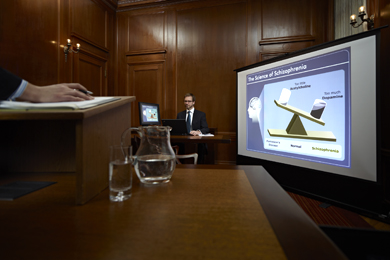Understanding Test Discussion: Tips for Engaging and Persuasive Courtroom Strategies
In the realm of test discussion, the ability to involve and convince is vital. The difficulty exists in seamlessly incorporating them right into a cohesive discussion. What methods can genuinely boost a test discussion from normal to remarkable?
Recognizing Your Audience
To successfully grasp trial discussion, it is important to recognize your audience. In the court room, your audience largely contains jurors, the judge, and opposite advise. Each team possesses distinctive perspectives, experiences, and prejudices that can influence their function of your disagreements. Jurors, as an example, are charged with interpreting evidence and developing realities based on their individual beliefs and worths. Understanding their demographics, backgrounds, and possible predispositions can aid tailor your presentation to reverberate with them properly.

A recognition of the court's choices and court decorum is similarly important, as it can influence the flow of your discussion. Juries may prioritize brevity and clarity, so providing your case in a straightforward manner can boost your trustworthiness. In addition, acknowledging the opposing advise's techniques can help in preparing counterarguments that effectively resolve their points.
Ultimately, recognizing your audience allows you to involve them better, cultivating link and persuasion throughout the test (trial presentation). By leveraging insights about their motivations and assumptions, you can develop a compelling discussion that reverberates and ultimately influences the result of the case. This fundamental understanding is crucial for any attorney aiming to achieve success in the court room
Crafting an Engaging Narrative
A well-crafted narrative offers as the backbone of an effective test discussion, assisting the audience with the intricacies of the situation. This story should be structured to involve jurors psychologically and intellectually, making the realities relatable and understandable. By weaving with each other the components of the situation-- such as the timeline, vital events, and critical testimonies-- lawyers can produce a meaningful story that resonates with jurors.
To achieve this, it is important to recognize the central styles that will drive the story. Lawyers must concentrate on the inspirations and goals of the events included, highlighting the human aspects of the instance (trial presentation). This strategy not only keeps juror rate of interest yet also fosters empathy, leading them to link directly with the story
Each sector of the story need to construct towards an engaging orgasm, culminating in an influential verdict that reinforces the situation's core message. Eventually, a strong narrative not just clears up the problems at hand yet also creates a long lasting Clicking Here impact that can influence the result of the test.
Using Aesthetic Aids Effectively
Just how can visual aids boost the efficiency of a test discussion? Aesthetic help work as effective tools that can substantially improve juror understanding and retention of intricate information - trial presentation. When utilized attentively, they can clarify bottom lines, show partnerships, and stress vital evidence that supports the instance narrative
Effective aesthetic aids include charts, graphs, timelines, and photos, which can simplify elaborate data and give context. A timeline can succinctly convey the sequence of occasions, while a graph can highlight analytical information in an aesthetically interesting fashion. The tactical use of multimedia discussions can additionally boost interaction and keep juror interest throughout the trial.
Furthermore, visual help can assist to stimulate psychological reactions, enhancing the human aspects of an instance. By presenting pictures or videos relevant to the case, lawyers can create a more compelling and relatable narrative. It is necessary to make certain that visual aids are skillfully developed and not excessively complicated, as this can lead to complication instead than quality.
Involving Body Language Techniques
Visual aids are not the only devices that can enhance the performance of a trial discussion; engaging body language methods likewise play a crucial role in catching visit this website juror focus and sharing self-confidence. A presenter's nonverbal hints can substantially influence jurors' understandings and responses, making it vital to master these techniques.

Furthermore, varying your singing tone and speed can enhance your narration, making it much more compelling. Stopping strategically enables jurors to absorb crucial information and signifies the value of what you are saying. Last but not least, moving actively within the court room can help reinforce your points, gave it does not sidetrack from your message.
Incorporating these body movement methods will not only boost your court presence however additionally promote an even more persuasive connection with jurors, eventually adding to the success of your trial presentation.
Practicing for Effect
Reliable click resources trial presentations pivot not just on the content yet additionally on the shipment, making practice crucial for impact. The relevance of wedding rehearsal can not be overemphasized; it permits lawyers to improve their arguments and develop a powerful existence in the courtroom. Taking part in purposeful technique aids lawyers to recognize their strengths and weak points, enabling them to adjust their pacing, tone, and body language accordingly.
To practice for impact, mimic test conditions as closely as feasible. This consists of using aesthetic help, practicing in front of coworkers, and soliciting useful comments.

Conclusion
Grasping trial discussion entails a complex technique that combines audience understanding, narrative advancement, aesthetic help, and body movement. These elements work synergistically to produce an influential courtroom experience. By efficiently engaging jurors with clear narration and impactful visuals, and by utilizing certain body movement, test supporters can substantially boost their arguments. Rigorous practice in simulated settings further solidifies these techniques, ensuring that each discussion reverberates and leaves an enduring perception on the jury.